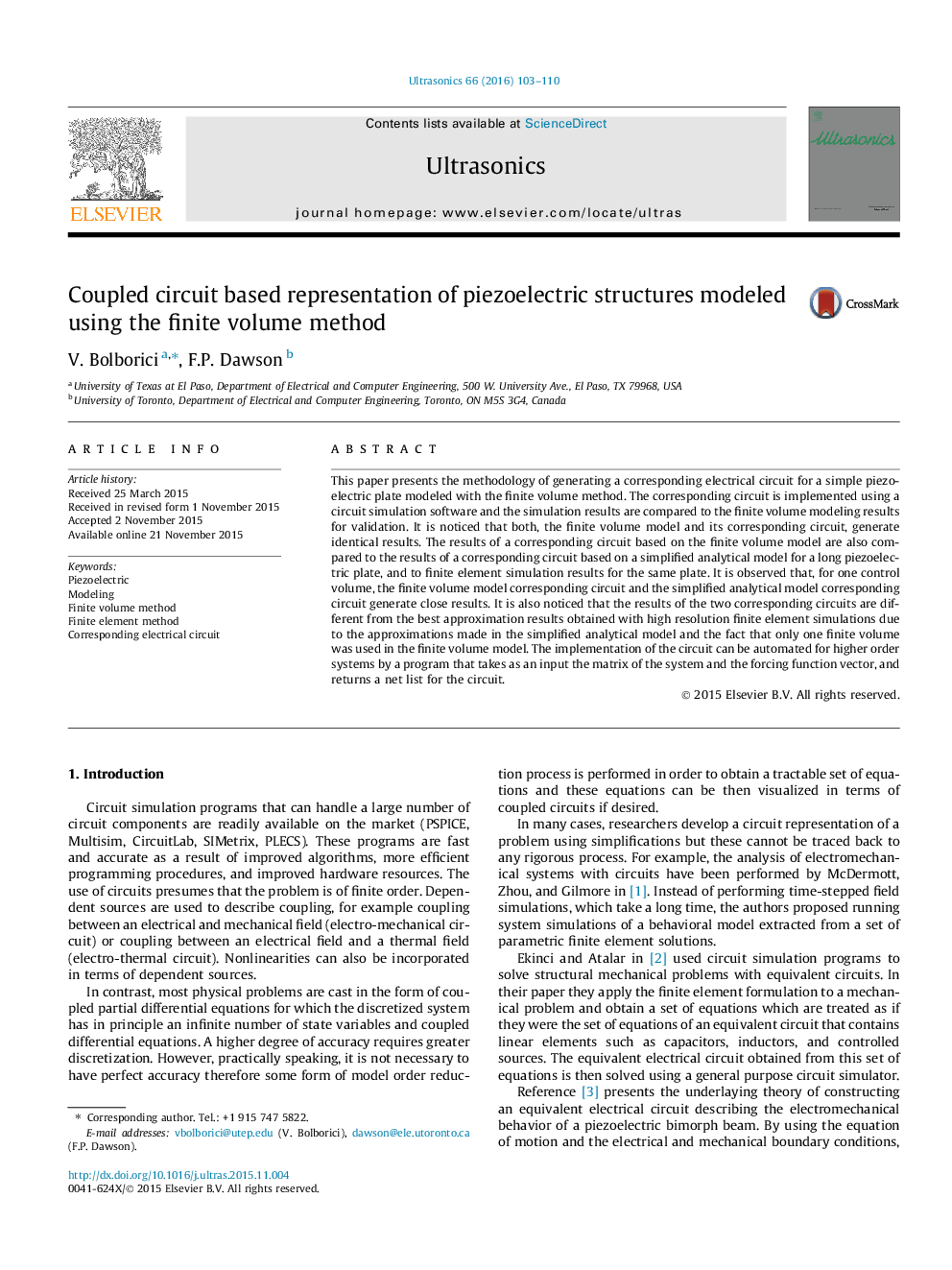| Article ID | Journal | Published Year | Pages | File Type |
|---|---|---|---|---|
| 1758579 | Ultrasonics | 2016 | 8 Pages |
•Corresponding electrical circuit for a simple piezoelectric plate modeled with the finite volume method.•Corresponding electrical circuit generates identical results to the analytical results of the finite volume model of the plate.•Corresponding electric circuit results are compared to the results of a circuit based on a simplified analytical model, and to finite element simulations.•For one finite volume, the results are very close to the results of the corresponding circuit based on a simplified analytical model but far from the best approximation obtained.•The accuracy of the corresponding electrical circuit can be improved by using a high number of finite volumes.•The implementation of the circuit can be automated for higher order systems.
This paper presents the methodology of generating a corresponding electrical circuit for a simple piezoelectric plate modeled with the finite volume method. The corresponding circuit is implemented using a circuit simulation software and the simulation results are compared to the finite volume modeling results for validation. It is noticed that both, the finite volume model and its corresponding circuit, generate identical results. The results of a corresponding circuit based on the finite volume model are also compared to the results of a corresponding circuit based on a simplified analytical model for a long piezoelectric plate, and to finite element simulation results for the same plate. It is observed that, for one control volume, the finite volume model corresponding circuit and the simplified analytical model corresponding circuit generate close results. It is also noticed that the results of the two corresponding circuits are different from the best approximation results obtained with high resolution finite element simulations due to the approximations made in the simplified analytical model and the fact that only one finite volume was used in the finite volume model. The implementation of the circuit can be automated for higher order systems by a program that takes as an input the matrix of the system and the forcing function vector, and returns a net list for the circuit.
